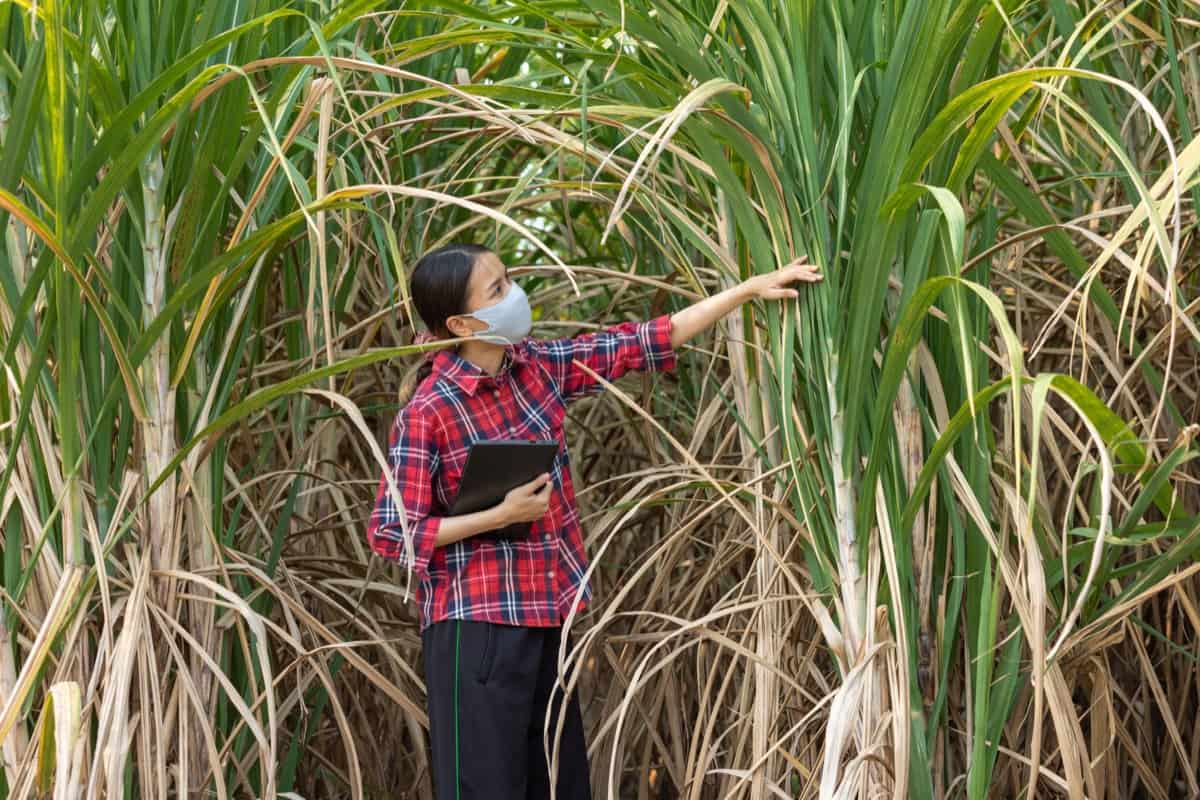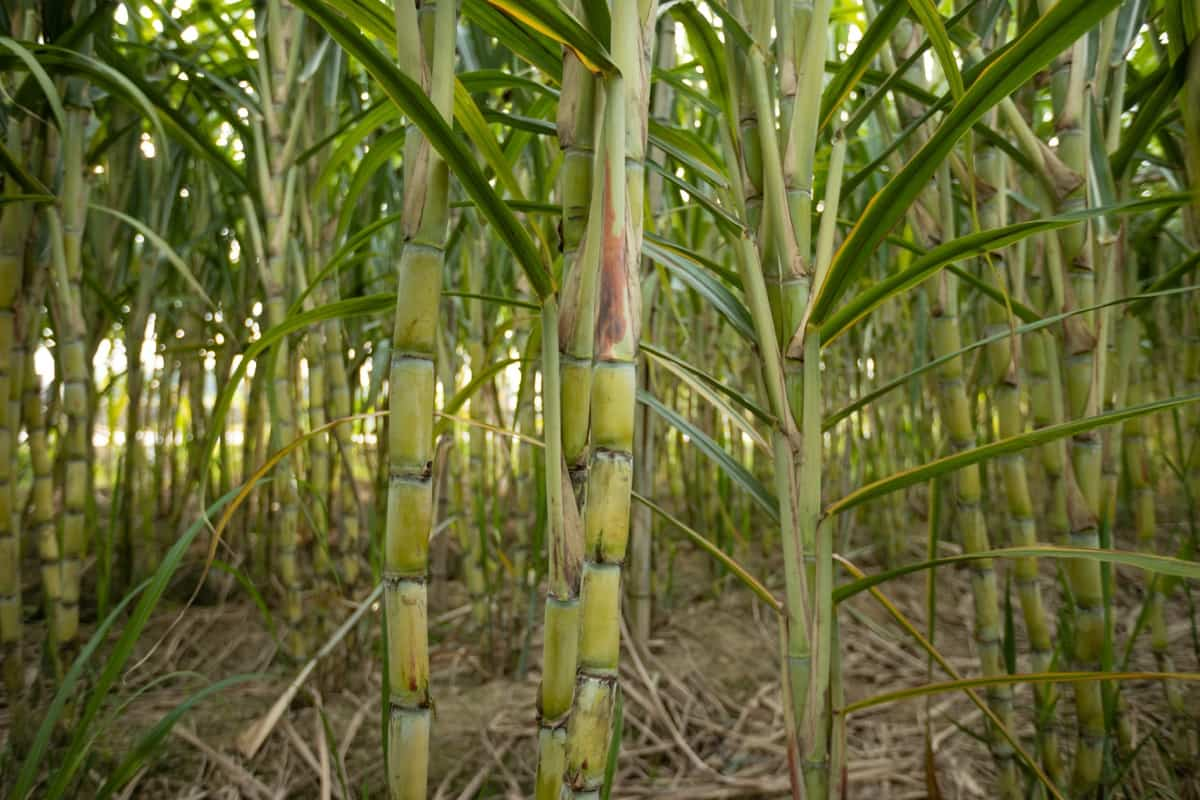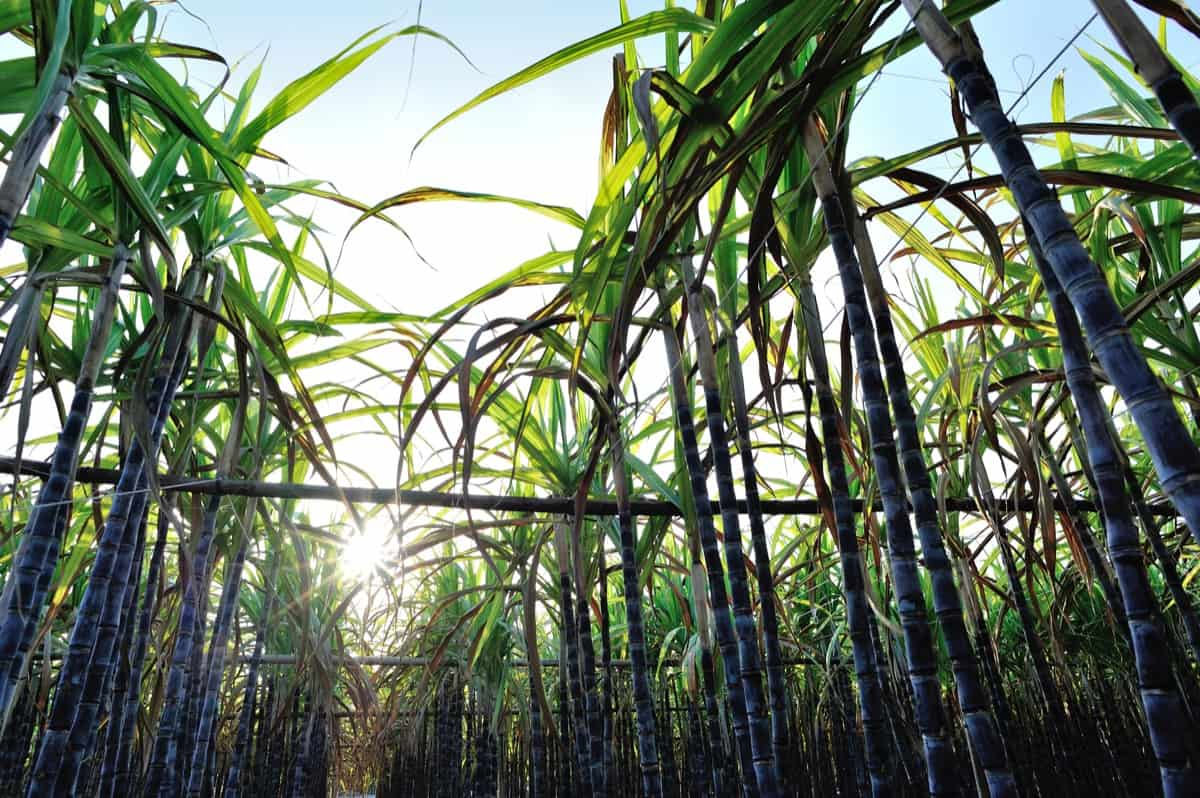Internode borer, Chilo sacchariphagus indicus (Kapur), is a major pest of sugarcane in tropical India. It is widely distributed across sugarcane-growing regions in the country and infests various sugarcane varieties. The internode borer is a particular moth that frequently inhabits sugarcane areas. This pest’s larvae feed on the sugarcane stalk’s inner tissues, harming the plant and lowering its yield. The internode borer may lead to sugarcane farmers a lot of loss if it is not controlled.

Therefore, it is crucial for sugarcane producers to understand the biology and behavior of the internode borer and to put these concepts into practice when putting this pest under control. This blog article will review various aspects of managing internode borer in sugarcane crops, including pest identification, tracking and scouting methods, cultural and mechanical control techniques, and chemical pesticide use.
We’ll additionally highlight how crucial integrated pest management (IPM) plans and environmentally friendly farming methods are for preventing internode borers from spreading and for keeping sugarcane harvests healthy and productive.
Internode Borer Management in Sugarcane
Factors Favoring Growth/ Causes of Internode Borer in the Field
The causal organism of internode borer in sugarcane fields is Chilo sacchariferous Indicus. This pest causes significant damage to the crop soon after internode formation, and its activity continues until harvest. The presence of water around shoots, waterlogged conditions, high dosage of nitrogen, and lodging favor the buildup of this pest. Severe infestation leads to yield loss and deterioration of juice quality.
Life Cycle of Sugarcane Internode Borer
The sugarcane internode borer has four stages in its life cycle: the egg, larva, pupa, and adult. The female moths lay their oval, flat, waxy white eggs in groups of 9–11 close to the midribs, on the sheaths of the leaves, or the stem. Four longitudinal violet bands surround the light brown head of the white larva.
The pupal phase lasts 7 to 10 days, and the pupation occurs in a semi-dried sheath. The adult’s forewings are each marked with a black spot and are straw in color. The borer can produce numerous generations within a year, and the entire life cycle lasts roughly 25–30 days.
Host range: The sugarcane internode borer has a host range limited to sugarcane and closely related grasses, including sorghum, maize, and wild grasses.
Identification of Internode Borer in Sugarcane in Field
The symptoms and physical characteristics of the pest can be used to identify internode borer in sugarcane fields. Boreholes, chewed leaves, and frass or excreta are signs of damaged sugarcane plants and point to larvae inside the stalk. The adult has a straw-colored body with a dark spot on each forewing, while the larvae have four violet longitudinal bands and a light brown head.
Damage Symptoms of Internode Borer in Sugarcane
- The caterpillars attack sugarcane plants about three months after planting.
- They bore into the canes near the nodes and tunnel upwards in a characteristic spiral fashion.
- The entry holes are usually plugged with excreta.
- The entry is primarily confined to the first five internodes.
- Constricted and shortened internodes
- Multiple boreholes in the nodal region
- Fresh excreta near the entry points
- Reddening of affected tissues
In case you missed it: Early Shoot Borer Management in Sugarcane: Symptoms, Treatment, Chemical, Biological, Natural, and Organic Control

Impact of Internode Borer on Sugarcane Yield
As it damages the crop right after internode formation and continues to do so until harvest, the internode borer significantly reduces sugarcane production. The infestation reduces yields and degrades juice quality, impacting the sugarcane farmers’ and industry’s total productivity and profitability.
Cultural Management of Internode Borer in Sugarcane
- Internode borer in sugarcane products can be controlled using various methods, including cultural and physical ones.
- Plant varieties with resistance like CO 975, COJ 46, and CO 7304
- Plant with setts free of harm from internode borers.
- Reduce the number of pest hiding places by clearing the crop during the fifth, seventh, and ninth months and burying the trash.
- To stop the pest from spreading, occasionally gather and destroy the eggs.
- Install pheromone traps to watch the pest population and take suitable action to manage it.
- Detrash the crop on the 150th and 210th days after planting to remove the pupae still in the leaf sheath.
Biological Management of Internode Borer in Sugarcane
The biological management of internode borer in sugarcane involves using natural enemies to control the pest population. Two effective biological management techniques are
Release of Egg Parasite, Trichogramma Chilonis
- Release Trichogramma chilonis, an egg parasite, at the rate of 2.5 cc/release/ha.
- Six releases should be made at fortnightly intervals, starting from the 4th month of planting.
Setting Pheromone Traps
- Set pheromone traps at the spindle level on the 5th month of planting, at a rate of 6 traps per acre in a 15-meter grid.
- Change the pheromone septa twice, at a 75-day interval, to monitor the pest population and take appropriate measures to manage it.
Chemical Management of Internode Borer in Sugarcane
- To reduce internode borer infection, stay away from nitrogenous fertilizers.
- Use biological methods and preventative measures when practical. Chemical treatments are reduced as a result.
- Internode borer populations can be decreased during growth seasons by applying the contact insecticide monocrotophos every two weeks.
- Apply 30 kg/ha of carbofuran 3G pellets to the soil if internode borer damage is severe.
Organic Management of Internode Borer in Sugarcane
- The internode borer damages sugarcane internodes. Parasitoids can handle this pest organically.
- Trichogramma australiacum egg parasitoid reduces internode borer. Inundating 50,000 Trichogramma australiacum parasites per hectare per week can manage pests.
- Trichogramma chilonis, another egg parasitoid, can be released six times at 15-day intervals from the fourth month at 2.5 ml per acre.
- Stenobracon deesa and Apanteles flavipes larval parasitoids can reduce internode borer populations. They can be freed according to infestation.
- Tetrastichus ayyari and Trichospilus diatraeae parasitoids attack pest pupae. Release them to manage pests.
Preventive Measures for Control of Internode Borer in Sugarcane
Preventive measures are important in controlling the internode borer pest in sugarcane crops. These include planting resistant varieties, selecting pest-free setts for planting, regularly monitoring crops, systematically collecting and destroying eggs, practicing good hygiene management, removing dry cane leaves, installing pheromone traps for monitoring, and providing good conditions for beneficial insects and natural predators.
In case you missed it: Leaf Blight Disease Management in Sorghum: Symptoms, Treatment, Chemical, Biological, Natural, and Organic Control

Conclusion
Effective management of internode borer in sugarcane combines preventive measures, biological and natural control methods, and specific chemical control when needed to reduce crop damage and yield losses.
- Types of Fungicides Used in Agriculture
- Common Issues in the Fruit Development Stage of Pomegranate Farming
- Fruit Development Issues in Papaya: Easy Solutions and Treatment
- Soil-Borne Diseases and How to Protect Your Plants
- Practices to Prevent Disease Spread in the Garden
- From Wilted to Thriving: How to Treat Root Rot Naturally in Houseplants
- Natural Remedies to Cure Brown Spots on Fig Tree Leaves
- Natural Solutions for Poinsettia Problems: 100% Effective Remedies
- How to Control Calla Lily Problems: Natural Remedies for Leaf and Flower Problems